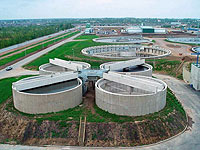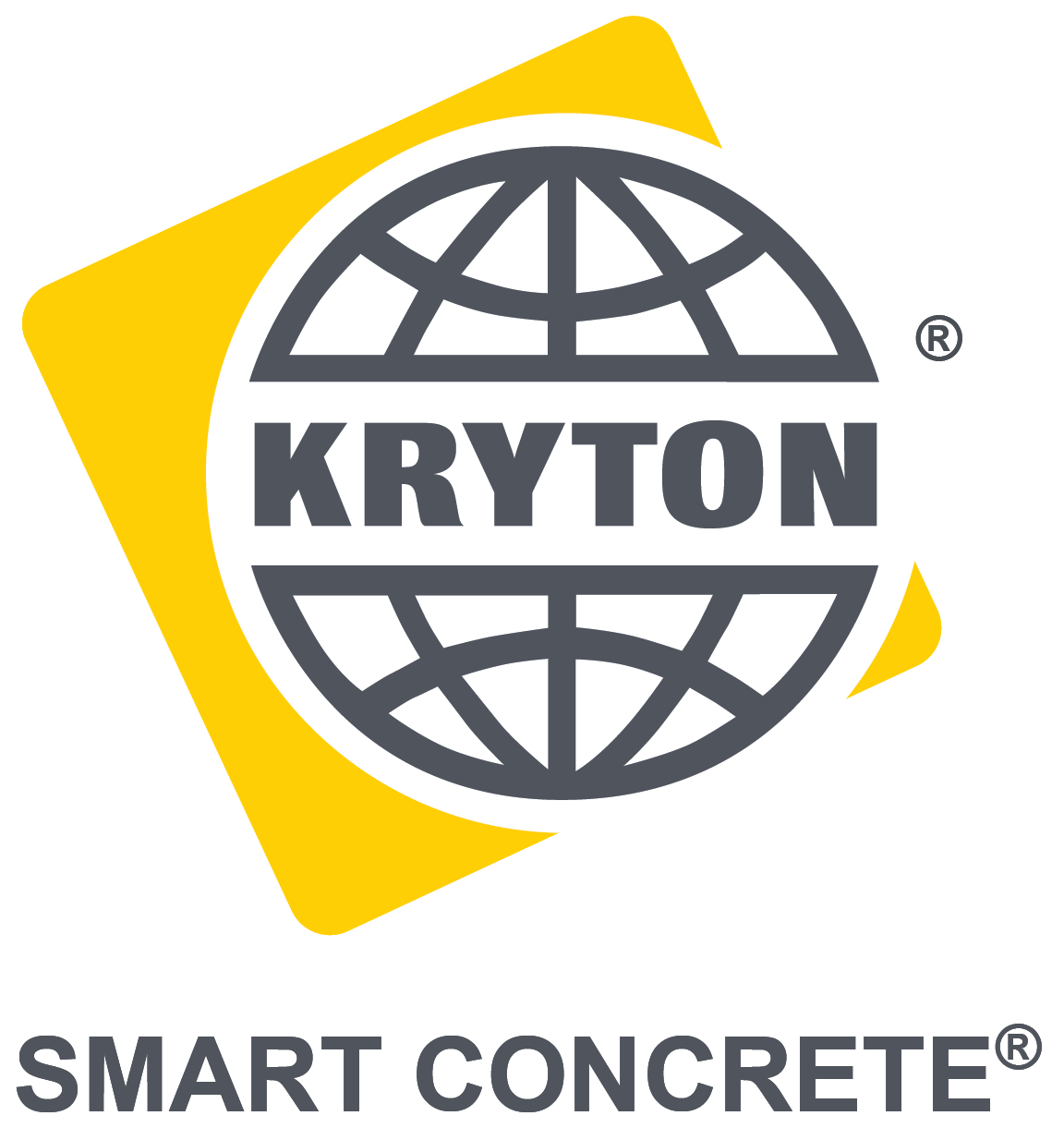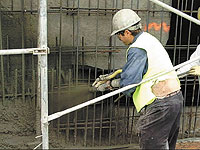10 questions to help you choose the right waterproofing system for your tanked structure
When it comes to preventing water damage and preserving the integrity of concrete structures, waterproofing is essential. In the case of concrete tanks, however, effective, reliable waterproofing is doubly critical.
Concrete tanks play a vital role in many communities. They function as drinking water containers, wastewater treatment plants and water storage reservoirs. Not only is a leak in a facility like this expensive and time-consuming to repair, it can be inconvenient and even dangerous to
the community.

Approximately 2,000 kg of KIM-HS was used in the St. Petersburg Southwest Wastewater Treatment Plan.
A town’s water supply can be compromised by waterborne chemicals migrating into drinking water. In drought-affected areas, water lost through leakage from a reservoir can be costly. And wastewater leaking from treatment plans can contaminate the ground or environment.
Effective waterproofing is especially important in underground or partially buried concrete tanks, since below grade cracks and leaks may be more difficult to detect and more expensive and time-consuming to repair.
Recognizing that the vast majority of concrete will eventually crack (and leak) due to shrinkage, settling, seismic activity and other factors, how do you protect your concrete tanked structure and keep water in and contaminants out? The best solution is to plan ahead and invest in a high quality, long lasting concrete waterproofing system.
There are a number of concrete waterproofing systems available on the market today suitable for use with shotcrete:
Rubberized or polyurethane membranes or barriers that are applied to the positive (exterior) side of the structure before steel reinforcements are positioned and shotcrete is applied.
Sodium bentonite, a clay material applied in panels to the positive side of the structure. Bentonite works by absorbing water and swelling to fill the cracks and voids in concrete. Upon reaching its maximum volume, the product stays in the cracks and voids to seal against future water intrusion.
Integral crystalline waterproofing (ICW) systems, which create a chemical reaction within concrete that causes crystals to form, filling the spaces between concrete particles and permanently blocking water. Some ICW systems react with the presence of water to grow additional crystals to self-seal cracks that develop. ICW can be applied as an admixture into the shotcrete mix or applied in a cementitious form to the positive or negative side of an existing concrete structure.
Each system offers different strengths and challenges. To determine which one is best for your specific tanked structure, consider the following:
How much does the system cost? Labour-intensive waterproofing systems or those that are complex or time-consuming to install are generally more expensive.
How long does installation take and does the required installation time fit within your construction timeframe? Installation times vary widely between waterproofing systems, so this is a vital question if your timeline is short. To avoid surprises or construction delays, find out how long installation can reasonably be expected to take.
How much design flexibility does the system offer? Some waterproofing systems must be applied to the positive side of a structure, which can present challenges in below ground or blind wall applications. Others can be applied to either the positive or negative side. Some systems can be installed before, during or after shotcrete is applied while others must be installed at a specific point in the construction process.
How difficult is the installation process? Some waterproofing systems are painstakingly difficult to apply, which can lead to inconsistent (and therefore, less reliable) application. Be sure to understand the human error factor of the waterproofing system you choose and how this could potentially impact the effectiveness of the end result.
How durable is the system and how long will it last? Some waterproofing systems can be punctured or damaged during the shotcrete process. Others are more resistant or impervious to physical damage. Some systems have a finite useful life and will eventually crack, dry out or otherwise deteriorate, leaving structures vulnerable to water leakage and contamination while others are designed to last the lifetime of the structure.
How much maintenance does the system require? Some systems require periodic repair and maintenance to repair damage or cracking and maintain their effectiveness. Others, like crystalline waterproofing systems, have the ability to self-seal cracks over time, which can help reduce downtime and save maintenance costs over the life of the structure.
How well does the system protect against corrosion protection? The corrosion of steel reinforcements by water and waterborne contaminants can significantly shorten the life of a concrete tanked structure. Look for a waterproofing system that offers proven corrosion protection.
Is the system certified non-toxic and safe for the environment? This is especially important if your tank will hold potable water that could become contaminated by the inward migration of waterborne chemicals, chlorides, sulphates and silt.
What kind of guarantee does the manufacturer/distributor offer? Always choose a manufacturer or distributor that stands behind the products they sell. Follow the manufacturer’s instructions closely, as this can impact the warranty. For example, some manufacturers only guarantee their products when installed by certified applicators or used in certain types of applications. Before you choose a waterproofing system, be sure you understand the warranty and any limitations or restrictions associated with each one.
What other attributes or benefits does the system offer? Some crystalline waterproofing admixtures, for example, can help to improve the performance, durability and wet properties of shotcrete, protect against shrinkage and cracking and control rebounding.
Take the time to assess each system, bearing in mind the specific requirements and challenges of your project. Before you select a waterproofing system, ask lots of questions, carefully review brochures and literature and speak with manufacturers’ technical service reps if you need additional information. It may even be worthwhile to have a manufacturer’s field rep visit the site.
Investing the time to research, compare and select the best waterproofing system for your shotcrete tank will save you a lot of time and expense in years to come. And regardless of which system you decide on, you’ll get best results by adhering to the American Concrete Institute’s standards and working with an ACI-certified nozzleman.
Problems, which it determined were due to unstable soil and major cracking in the concrete. On two separate occasions, shotcrete was applied to repair the cracks and stop the water flow, but water continued leaking in and out of the pond.
Finally, a local ready-mix supplier suggested a two-part solution: add nylon fibres to the shotcrete to reduce shrinkage and cracking during curing and minimize the width of cracks, and add an integral crystalline waterproofing product to self-seal small cracks and voids that might occur in future. In keeping with the district’s environmental mandate and to protect the grass carp, non-toxic products would be used in the repair.
The district agreed to try this solution and the new shotcrete mix was applied to the pond. An inspection several months later showed that although another crack had developed in the concrete, it had self-sealed itself below the water line, protecting the pond from leaking and keeping the fish safe. To date, the carp pond is performing as specified and providing a safe, secure winter home for these hardworking fish.




 SMART CONCRETE®
SMART CONCRETE®